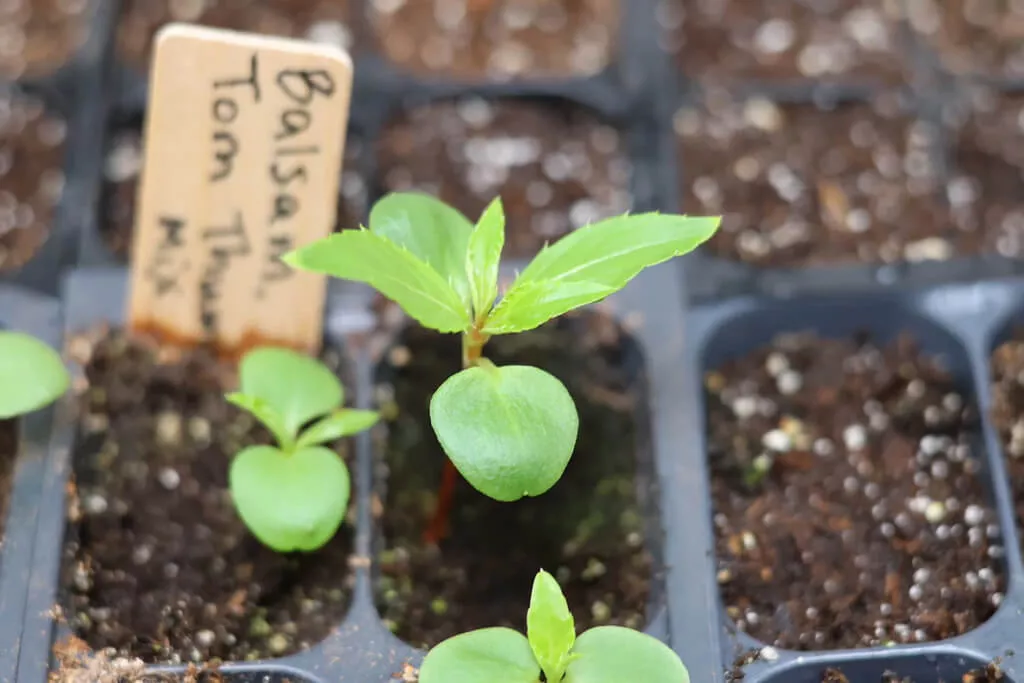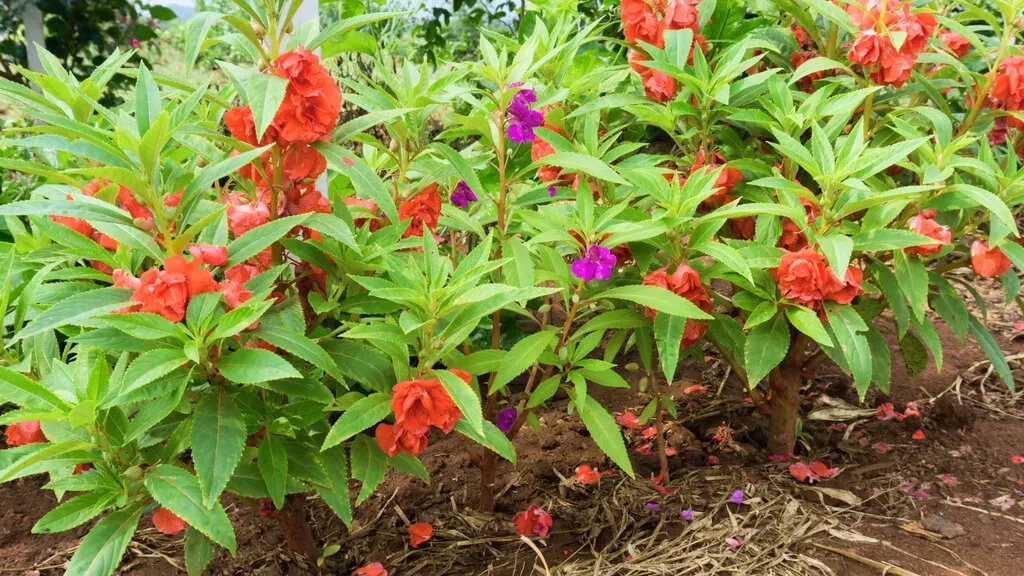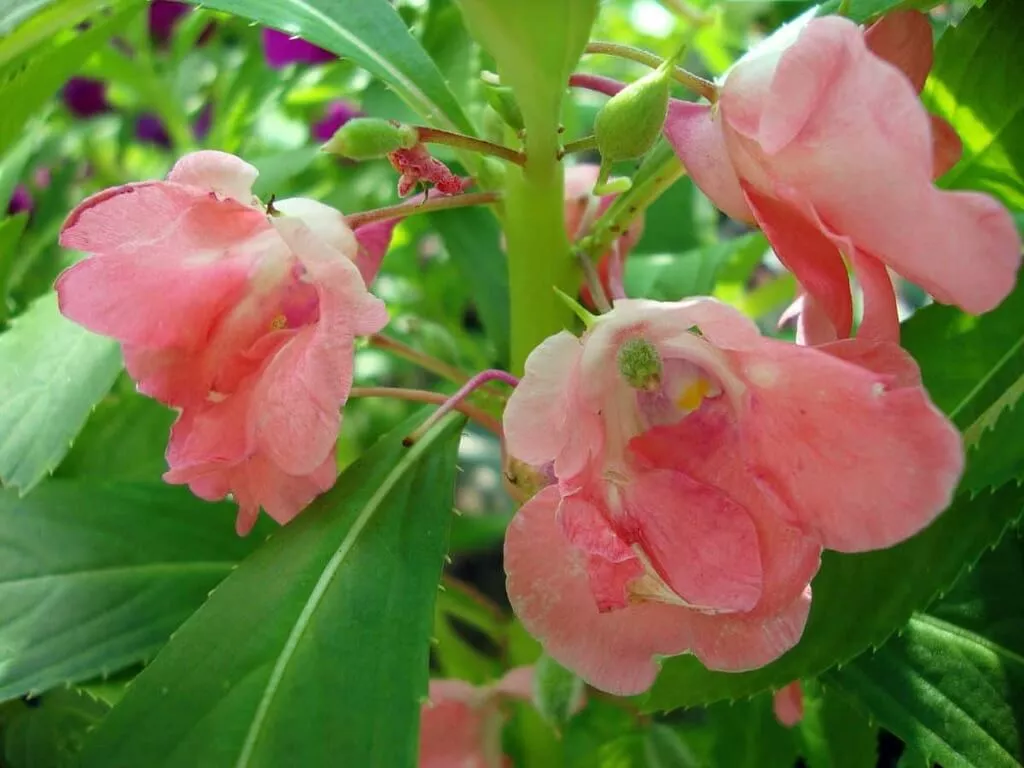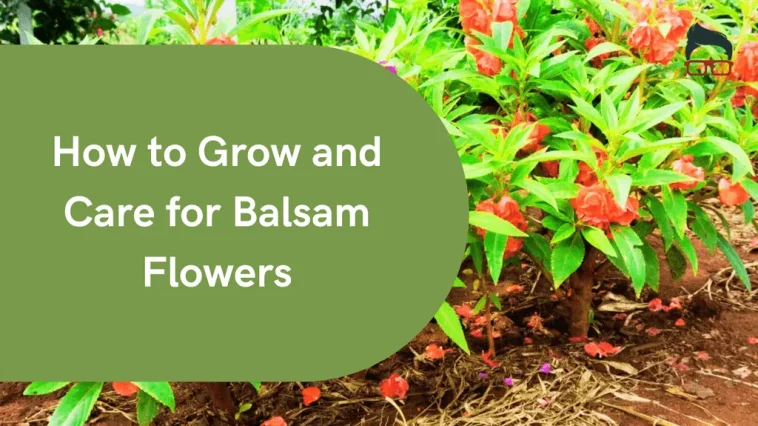The name you know is “Gul-mehndi” for the flower, which quietly looks like a rose but has huge differences from it. But its international name is balsam flower, and its scientific name is Impatiens Balsamina; its biological name is Abies Balsamea. You can see this flower in many colors, like pink, red, white, and green. This plant is easy to grow and splashes the colors in your garden.
In this article, we will delve into all the things you are curious to know about balsam flowers, from their characteristics to how they grow to their benefits and disadvantages for you.
Botanical Overview
- Common Name: Balsam, Garden Balsam, Touch-Me-Not (not to be confused with Mimosa pudica)
- Botanical Name: Impatiens balsamina
- Family: Balsaminaceae
- Origin: Native to India and Southeast Asia
- Plant Type: Annual flowering plant
How to Grow Balsam Flowers

- Sun: As these flowers grow in the sunny season, the sun plays a big role in growing these flowers. And May to August is called the balsam flower season.
- Soil: These flowers require nutritious land. If the soil is not suitable for these flowers, then it will take too long a time to grow, and its growth may be stunted.
- Spacing: If you are planting this in your garden, then make sure that you plant this in every 15-20 inch gap between every plant.
- Watering: This plant can not grow in a dry landscape, so ensure you are watering this plant daily to make this plant grow.
- Fertilizing: Use the slow fertilizer, which will make your land nutritious, and your flowers will bloom the whole summer.
Balsam Flower Uses

- These flowers are working as traditional medicine for deep cuts, fractures, and the treatment of constipation, as they work as an antibiotic-resistant in India, China, Korea, and even all of Asia.
- People of Vietnam are using these flowers to wash their hair, and they claim that washing their hair with these flowers gives their hair growth and volume.
- These flowers can be a lifesaver as medicine in your own home, in your own garden.
- You can take these flowers to use to give a huge splash of colorful bloom to your garden.
Anatomy of the Balsam Plant
Stem: The colors of the stems of balsam plants are mostly green, red, pink, purple, and burgundy. Also, it can be robust and straight but extremely delicate. This is the main reason to call it “touch-me-not.”
Leaf: Like all plants’ leaves, this plant’s leaf is also green, simple, and spirally arranged with a sharp border. Its measurement is 3-6 inches long and 1-3 inches wide.
Flower: This traditional flower has three sepals, two of which are small and green, and one of which is irregular and shaped like a petal with a prominent spur. Mostly, the five petals are always fused; it gives the flower a hooded shape and a round-topped appearance like a rose.
Flower Color: You can see these flowers in purple, pink, red, burgundy, and lavender color.
Flower Inflorescence: Solitary
Fruit: On this plant, fruit grows like a capsule that begins to grow with a green color, and then slowly it turns yellow as it matures. These fruits are 1-3 inches long and wide and burst to release seeds when touched, hence the name “touch-me-not.”
Description of Balsam Plants

- Height: Typically grows between 1 and 2.5 feet (30–75 cm)
- Structure: Upright, bushy habit with thick, juicy stems
- Leaves: Lance-shaped, serrated edges, arranged alternately
- Flowers: Single or double blooms; resemble small camellias or roses
- Color Variety: Pink, red, violet, white, lavender, rose, bi-colored
- Bloom Time: Late spring to early fall (April to October in warm climates)
This plant attracts bees, butterflies, and hummingbirds.
The things you need to grow balsam
- Gardening gloves
- Seedling Tray
- Packet of Balsam seeds
- Trowel
- Rake
- Label and pencil
Pros & Cons
Pros:
- Balsam flowers are available in a variety of colors like white, red, salmon, lilac, orange, purple, rose, and pink. Along with this, it is also available in solid colors or variegated patterns.
- These flowers are pollinator-friendly, which attracts butterflies, bees, and sphinx moths, which sip nectar from the blooms. And encourage regular pollinator visits to your garden.
- These flowers re-seed prolifically. Once established, they will grow every year with a little effort from the gardener.
- These flowers do not require high maintenance, and they are heat tolerant.
Cons:
- These plants are aggressive self-seeders. If you touch it slightly, it will be drained. That’s why its name is “touch-me-not.”
- This plant once spread it being too sharp, so this plant’s cutting and hand pulling are so hard
- Yet, this plant is easy to grow. Still, these plants are now not findable in any garden, unlike before, when it was easy to see them anywhere.
Conclusion
Once celebrated in gardens, this flower was cherished by gardeners in the early 1900s but now seems overlooked. It was easy to grow in any place, like indoors or outdoors, but now it is hard to find. So grow these plants in your garden and home as a treasure of flowers. It will give a splash of heaven to your garden. Along with that, it will also help to use it as medicine on your wounds.
Also Read:


